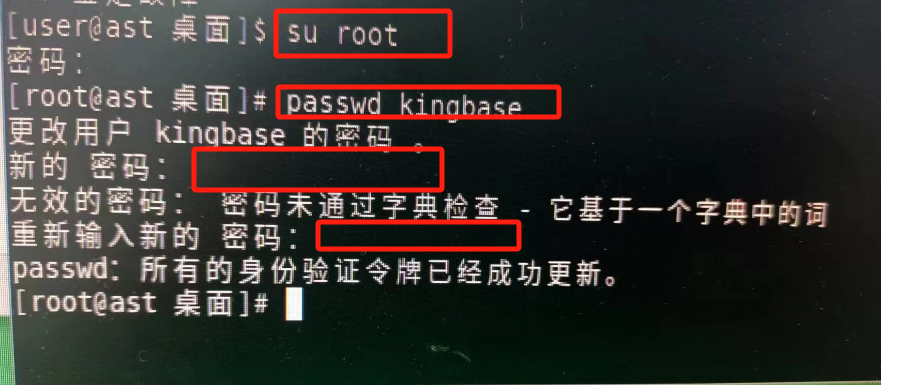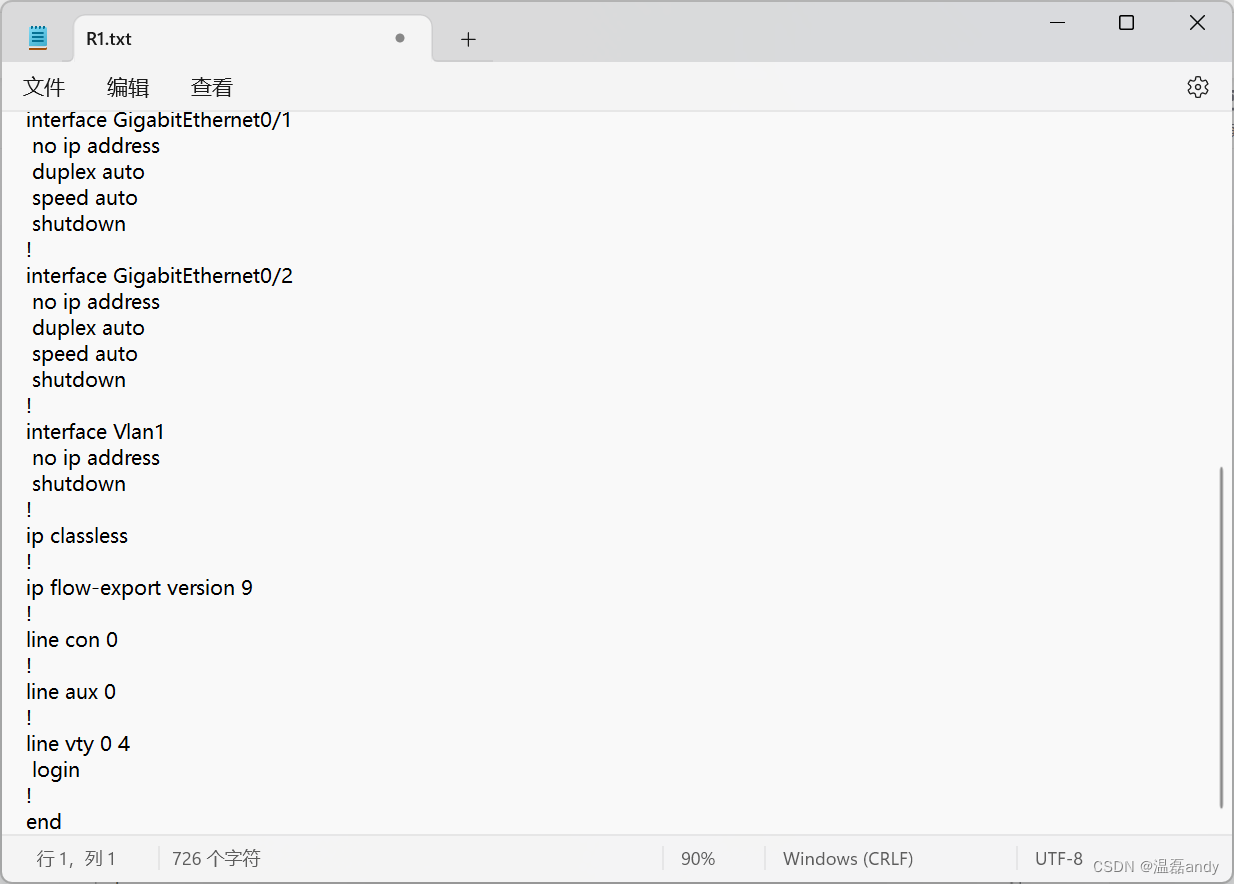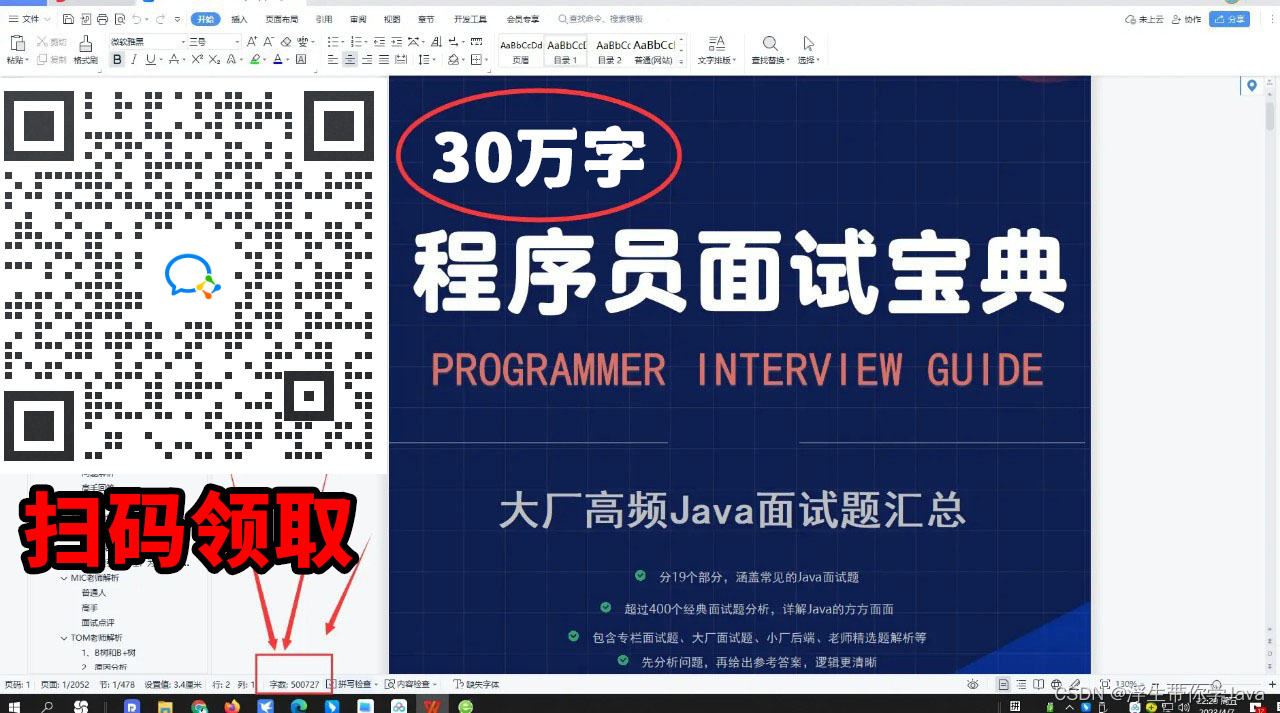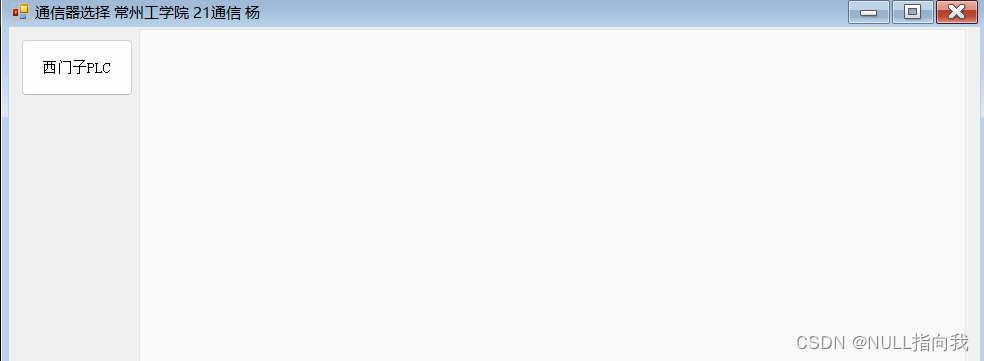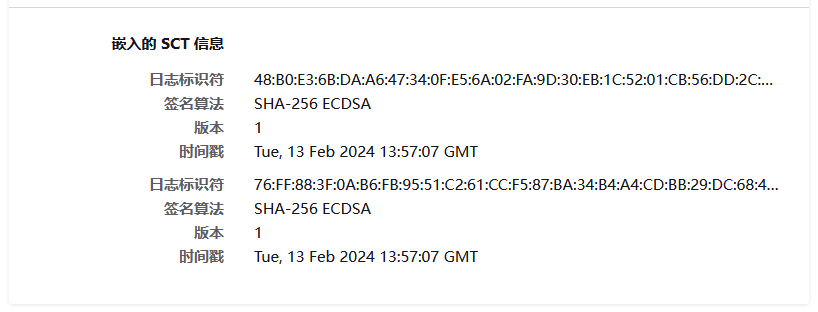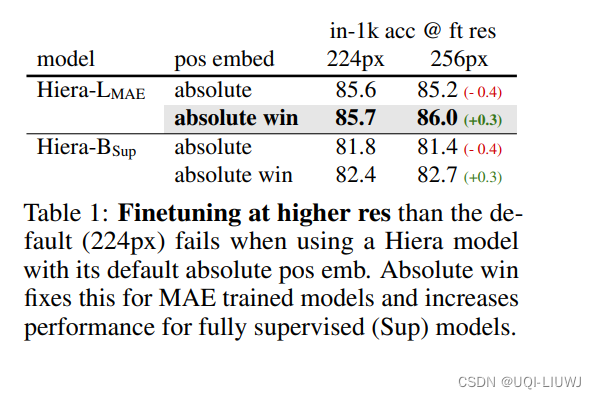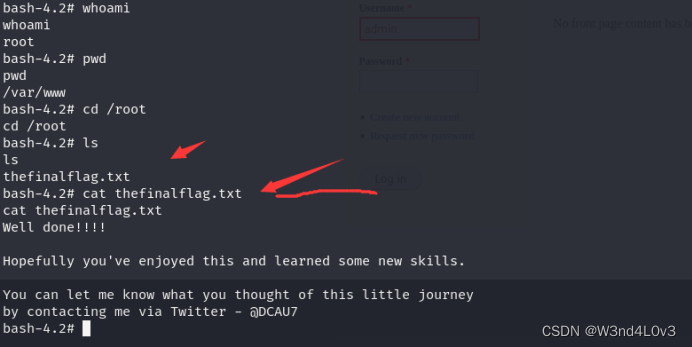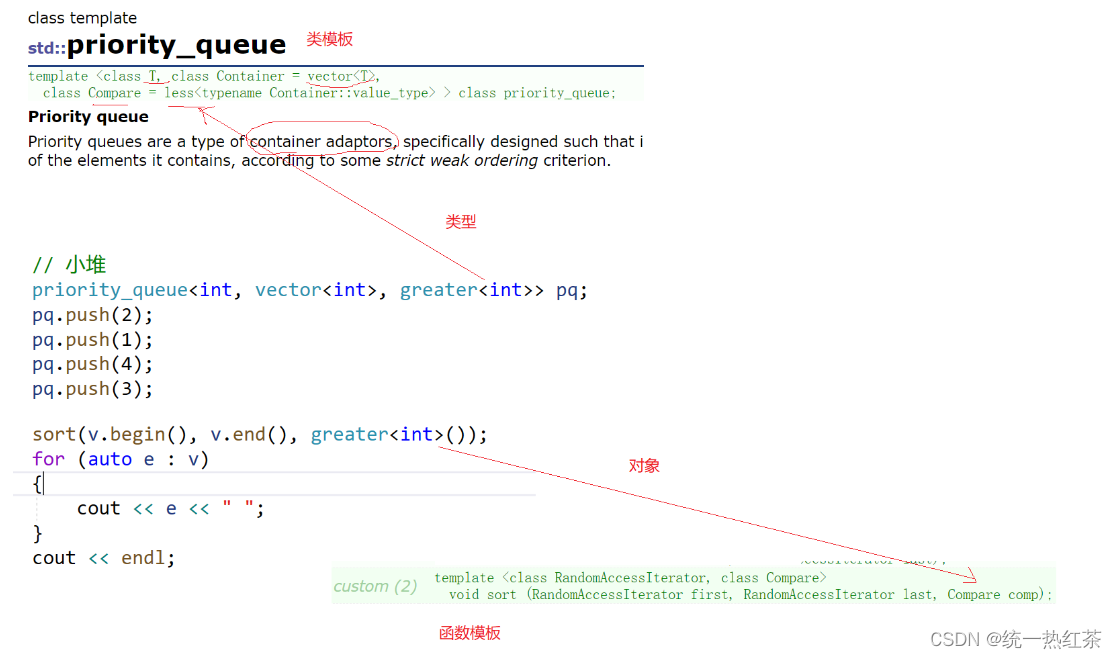目录
1392. 最长快乐前缀
思路
过程
686. 重复叠加字符串匹配
796. 旋转字符串
string内置函数find
KMP算法
结尾
1392. 最长快乐前缀
「快乐前缀」 是在原字符串中既是 非空 前缀也是后缀(不包括原字符串自身)的字符串。
给你一个字符串
s,请你返回它的 最长快乐前缀。如果不存在满足题意的前缀,则返回一个空字符串""。示例 1:
输入:s = "level" 输出:"l" 解释:不包括 s 自己,一共有 4 个前缀("l", "le", "lev", "leve")和 4 个后缀("l", "el", "vel", "evel")。最长的既是前缀也是后缀的字符串是 "l" 。
示例 2:
输入:s = "ababab" 输出:"abab" 解释:"abab" 是最长的既是前缀也是后缀的字符串。题目允许前后缀在原字符串中重叠。
提示:
1 <= s.length <= 10(5)
s只含有小写英文字母
思路
这道题目的意思是,给我们一个字符串s,需要我们返回这个字符串s的最长公共前后缀的长度。
计算某一个字符串s的最长公共前后缀的长度,依靠kmp算法中计算match模式串next数组的计算方式即可。
首先创建一个next数组,next[i]表示0~i-1区间的最长公共前后缀长度。
因此next数组的长度应该为s.size()+1,因为我们需要得到0~s.size()-1区间的最长公共前后缀长度。
对应是next[s.size()],所以next的大小选哟是s.size()+1。
过程
1. if (next.size() == 1) return ""; kmp计算next数组,一定不要忘记next数组长度为1的时候直接返回。
因为next数组中,next[0]=-1,next[1]=0,这两个位置是人为定义的,因此为了不能越界访问,当next长度为1的时候,直接返回。
2. next[0] = -1, next[1] = 0; int i = 2; int cn = 0;
初始化,从i=2位置开始填写next数组。对于每一个新的i,cn一定是next[i-1]的值。
3. while (i < next.size()) { if (s[cn] == s[i - 1]) { next[i] = cn + 1; i++, cn = cn + 1;
while循环,黑盒,内部逻辑将i位置的next计算完毕。
4.
如果s[cn]==s[i-1],此时next[i]=cn+1。
填写好next[i],维护下一个i和cn的值。
i++,cn=cn+1。
5. } else if (cn != 0) { cn = next[cn];
如果s[cn]!=s[i-1],此时cn=next[cn],继续判断s[cn]与s[i-1]。
6. } else { next[i] = 0; i++, cn = 0;
如果cn==0,对应的next[cn]=-1,此时next[i]=0。
维护下一个i和cn。
i++,cn=0。 7. return s.substr(0, next[s.size()]); 返回next[s.size()],表示0~s.size()区间长度的最长公共前后缀。
class Solution {
public:
string longestPrefix(string s) {
vector<int> next(s.size() + 1);
if (next.size() == 1)
return "";
next[0] = -1, next[1] = 0;
int i = 2;
int cn = 0;
while (i < next.size()) {
if (s[cn] == s[i - 1]) {
next[i] = cn + 1;
i++, cn = cn + 1;
} else if (cn != 0) {
cn = next[cn];
} else {
next[i] = 0;
i++, cn = 0;
}
}
return s.substr(0, next[s.size()]);
}
};686. 重复叠加字符串匹配
给定两个字符串
a和b,寻找重复叠加字符串a的最小次数,使得字符串b成为叠加后的字符串a的子串,如果不存在则返回-1。注意:字符串
"abc"重复叠加 0 次是"",重复叠加 1 次是"abc",重复叠加 2 次是"abcabc"。示例 1:
输入:a = "abcd", b = "cdabcdab" 输出:3 解释:a 重复叠加三遍后为 "abcdabcdabcd", 此时 b 是其子串。
示例 2:
输入:a = "a", b = "aa" 输出:2
示例 3:
输入:a = "a", b = "a" 输出:1
示例 4:
输入:a = "abc", b = "wxyz" 输出:-1
提示:
1 <= a.length <= 10(4)
1 <= b.length <= 10(4)
a和b由小写英文字母组成

1.
首先让a不断进行叠加操作,语句是a+=a。
直到a的长度an>=原先a的长度+bn。
因为重复叠加a字符串,b如果是a的子串,开始匹配的位置一定是原先a字符串中某一个字符。
因此可以确定叠加字符串的上界。
2.
如何计算花费了多少个a字符串叠加?

综上所述,a的叠加数等于(len-1)/an+2=(bn-cd-1)/an+2=(bn-(an-(x-y))-1)/an+2=(bn-an+(x-y)-1)/an+2。
3.
利用KMP算法计算a叠加串中b子串开始位置。
class Solution {
public:
int repeatedStringMatch(string a, string b) {
int maxlen = a.size() + b.size();
int an = a.size();
int bn = b.size();
while (a.size() < maxlen)
a += a;
vector<int> next = getNext(b);
int x = 0, y = 0;
while (x < a.size() && y < b.size()) {
if (a[x] == b[y]) {
x++, y++;
} else if (y != 0) {
y = next[y];
} else {
x++;
}
}
if (an - (x - y) >= bn) {
return 1;
}
if (y == b.size()) {
return (bn + x - y - an - 1) / an + 2;
} else {
return -1;
}
}
vector<int> getNext(string match) {
vector<int> next(match.size());
if (match.size() == 1)
return {-1};
next[0] = -1, next[1] = 0;
int i = 2;
int cn = 0;
while (i < next.size()) {
if (match[cn] == match[i - 1]) {
next[i] = cn + 1;
i++;
cn = cn + 1;
} else if (cn != 0) {
cn = next[cn];
} else {
next[i] = 0;
i++;
cn = 0;
}
}
return next;
}
};796. 旋转字符串
给定两个字符串,
s和goal。如果在若干次旋转操作之后,s能变成goal,那么返回true。
s的 旋转操作 就是将s最左边的字符移动到最右边。
例如, 若
s = 'abcde',在旋转一次之后结果就是'bcdea'。示例 1:
输入: s = "abcde", goal = "cdeab" 输出: true
示例 2:
输入: s = "abcde", goal = "abced" 输出: false
提示:
1 <= s.length, goal.length <= 100
s和goal由小写英文字母组成
string内置函数find
1.
两个a字符串叠加在一起,叠加后的字符串寻找模式串goal,看是否能在叠加后的字符串子串找到模式串。
2.
利用string内置函数find寻找子串开始匹配位置。
class Solution {
public:
bool rotateString(string s, string goal) {
if(s.size()!=goal.size()) return false;
s+=s;
int pos=s.find(goal);
if(pos==-1) return false;
else return true;
}
};KMP算法
class Solution {
public:
bool rotateString(string s, string goal) {
if(s.size()!=goal.size()) return false;
s+=s;
vector<int> next=getNext(goal);
int x=0,y=0;
while(x<s.size()&&y<goal.size()){
if(s[x]==goal[y]){
x++,y++;
}else if(y!=0){
y=next[y];
}else{
x++;
}
}
if(y==goal.size()) return true;
else return false;
}
vector<int> getNext(string match){
if(match.size()==1) return {-1};
vector<int> next(match.size());
next[0]=-1;
next[1]=0;
int i=2;
int cn=0;
while(i<next.size()){
if(match[cn]==match[i-1]){
next[i]=cn+1;
i++,cn=cn+1;
}else if(cn!=0){
cn=next[cn];
}else{
next[i]=0;
i++,cn=0;
}
}
return next;
}
};结尾
最后,感谢您阅读我的文章,希望这些内容能够对您有所启发和帮助。如果您有任何问题或想要分享您的观点,请随时在评论区留言。
同时,不要忘记订阅我的博客以获取更多有趣的内容。在未来的文章中,我将继续探讨这个话题的不同方面,为您呈现更多深度和见解。
谢谢您的支持,期待与您在下一篇文章中再次相遇!






